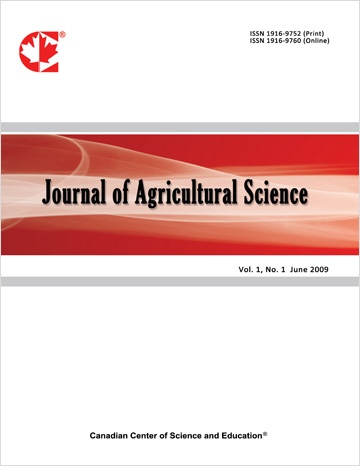Satellite-Based Crop Monitoring and Yield Estimation—A Review
- Olipa N. Lungu
- Lydia M. Chabala
- Chizumba Shepande
Abstract
To sustain food security and crop condition monitoring, yield estimation must improve at local and global scales. The aim of this review was to give a background of satellite-based crop monitoring and crop yield estimation, including the use of crop models. Recently, most advances in remote sensing techniques, aimed at complimenting the traditional crop harvest surveys, have focused on high-production and information-rich areas. However, there is limited research in dynamic landscapes using these techniques at local scales in most Southern African countries. Models such as the Decision Support System Agro-Technology’s (DSSAT) CERES-model, and Agricultural Production Simulator (APSIM) have been used to simulate maize biophysical parameters and yield variability in a changing climate. Despite the successes, there is still need to consider yield prediction using simplified models that decision-makers can use to plan for food support and sales. The application of freely-available satellite data with focus on maize crop as a staple for Southern Africa, highlights some challenges such as heavy reliance on agro-meteorological estimations and regional estimations of crop yield. It also raises questions of predicting across large growing belts without consideration of diverse cropping patterns. Conversely, future opportunities in crop monitoring and yield estimation using remotely sensed-data still shed a light of hope. For instance, employing multi-model configurations or multi-model ensembles is one of the major missing gaps needing consideration by crop modeling research. Other simpler, but versatile opportunities are the use of crop –monitoring applications on smart phones by small holder farmers to provide phenological data to decision makers throughout a growing season.
- Full Text:
 PDF
PDF
- DOI:10.5539/jas.v13n1p180
Journal Metrics
- h-index: 67
- i10-index: 839
- WJCI (2023): 0.884
- WJCI Impact Factor (2023): 0.196
Index
- AGRICOLA
- AGRIS
- BASE (Bielefeld Academic Search Engine)
- Berkeley Library
- CAB Abstracts
- ChronosHub
- CiteSeerx
- CNKI Scholar
- Copyright Clearance Center
- CrossRef
- DESY Publication Database
- DTU Library
- e-Library
- EBSCOhost
- EconPapers
- Elektronische Zeitschriftenbibliothek (EZB)
- EuroPub Database
- Excellence in Research for Australia (ERA)
- Google Scholar
- Harvard Library
- IDEAS
- iDiscover
- Jisc Library Hub Discover
- JournalTOCs
- KindCongress
- LIVIVO (ZB MED)
- LOCKSS
- Max Planck Institutes
- Mendeley
- MIAR
- Mir@bel
- NLM Catalog PubMed
- Norwegian Centre for Research Data (NSD)
- Open J-Gate
- OUCI
- PKP Open Archives Harvester
- Polska Bibliografia Naukowa
- Qualis/CAPES
- RefSeek
- RePEc
- ROAD
- ScienceOpen
- Scilit
- SCiNiTO
- Semantic Scholar
- SHERPA/RoMEO
- Southwest-German Union Catalogue
- Standard Periodical Directory
- Stanford Libraries
- SUDOC
- Swisscovery
- Technische Informationsbibliothek (TIB)
- Trove
- UCR Library
- Ulrich's
- UniCat
- Universe Digital Library
- WorldCat
- WRLC Catalog
- Zeitschriften Daten Bank (ZDB)
Contact
- Anne BrownEditorial Assistant
- jas@ccsenet.org
